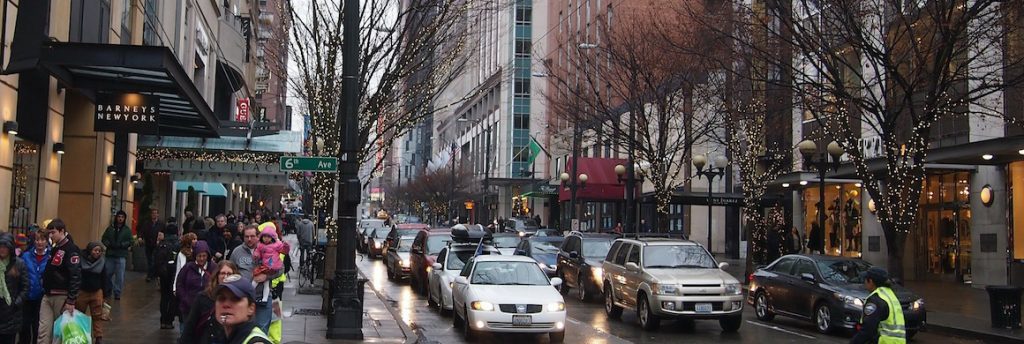As Downtown Seattle Adds Jobs Commuters Turn to Transit

Seattle might not equal New York City concerning traffic congestion, but it’s not far behind. According to Seattle Times reporter Mike Lindblom, “Transit evangelists have been saying for years there’s no room anymore to add cars in central Seattle.” Well, there’s good news. Based on a new report published by Commute Seattle, commuters agree. Though the population of Seattle has increased by 45,000 over the past six years, drive-alone commuters only rose by 2,255, meaning that most new Seattleites chose to walk, bike, carpool or telecommute to the office instead.
This is great news and means that Seattle reached its commute goal four years early. As of now, only 30 percent of Seattle’s city-center workers drives alone, and transit use rose to 47 percent (117,000 morning trips). As for the reason behind the increase in public transit and the decrease in solo drivers, there are many sides to the equation.
First, was the voter-approved tax increases to add more light-rail stations and bus trips. Second are traffic congestion and vehicle costs. According to the article, “a drive from Everett to Seattle averages 56 minutes, but motorists must allow 92 minutes to be sure they get to work on time.” And above and beyond that, downtown Seattle parking isn’t cheap. On average, it can cost more than $250 per month, which is a huge expenditure considering employers in central-city spend $100 million a year on transit passes, incentive pay, bike storage and other methods to encourage fewer solo drivers.
However, all this isn’t to say that solo driving will be a thing of the past for Seattle. While there aren’t many projects planned to relieve city-center congestion, there are plans to add as many as 24,867 parking stalls including 11,000 parking spaces for buildings planned or under construction. But according to Scott Kubly, the director of the Seattle Department of Transportation, “If we are doing our job well, in terms of delivering safe infrastructure for walking and biking, good transit infrastructure for signal priority and moving buses through downtown, delivering light rail … the reality is not all of those 11,000 spaces may be needed,” he said.
So, if you’re an environmental conscious MBA candidate looking to go to school in a city that won’t require you to drive to class in your own car, Seattle might be the perfect location.
